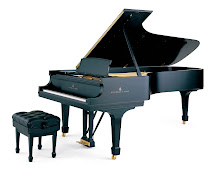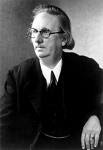
Classical Music 101
From time to time I will post bits and pieces about what I am reading in the area of classical music. The following is from the book called Classical Music 101 by Fred Plotkin.
I wanted a book that would walk me through the so called standard repertoire with some commentary about the particular work. Well, here is the table of contents so you will get the idea.
Table of Contents
1. First Hearing: Developing Your Listening Skills 1
2. Making Music 11
3. Some Thoughts on the Recordings Used in Classical Music 101 33
4. The Voices of the Orchestra 45
5. Colors and Pictures: More Thoughts About Listening 109
6. Second Hearing: Beethoven's Seventh Symphony 145
7. Theory, and Practice 161
8. The Symphony 181
A Conversation with James Levine 191
9. Attending a Live Performance 243
10. The Piano 281
A Conversation with Emanuel Ax 310
11. The Violin 337
A Conversation with Joshua Bell 344
12. Stringing Along: Music for Viola, Cello, and Double Bass 367
13. The Woodwinds 379
14. The Brass Family 391
15. The Percussion: Bells, Whistles, Thunder, and a Beating Heart 399
16. Early Music: From These Roots 409
17. The Singer's Art: Lieder and Vocal Music 421
A Conversation with Marilyn Horne 452
18. Lift Every Voice: Music with Chorus 477
19. Feeling Music: Gustav Mahler's Symphony No. 2 507
20. Mount Olympus and Elysian Fields: Beethoven's Ninth Symphony 519
21. Coda: Some Final Notes 529
Discography for Classical Music 101 541
Resources for the Classical Music Lover 563
Traveling to Hear Classical Music: Concert Halls and Theaters Around the World 569
Index 647
It really is a good book for a beginner. While I have many books on classical music this seems to be one I like to return to often. I am currently working through chapter 5 again on colors and pictures.
The author makes this statement, "Writers such as Baudelaire, Mallarme, Verlaine, and Maeterlinck were deeply involved in Symbolism. ...Debussy's work is the musical equivalent of Impressionism, in which formal structures are rejected in favor of a style that emphasises color, sensuality, exoticism, and a new means to perceive familiar things. Debussy said that he did not believe he was an Impressionist, and felt much closer to Symbolism, in which images and symbols often represent their literal selves as well as underlying ideas."
Fascinating concept that the author makes. Here is a poem by Baudelaire.
BEAUTY
by: Charles Baudelaire
I AM as lovely as a dream in stone,
And this my heart where each finds death in turn,
Inspires the poet with a love as lone
As clay eternal and as taciturn.
Swan-white of heart, a sphinx no mortal knows,
My throne is in the heaven's azure deep;
I hate all movements that disturb my pose,
I smile not ever, neither do I weep.
Before my monumental attitudes,
That breathe a soul into the plastic arts,
My poets pray in austere studious moods,
For I, to fold enchantment round their hearts,
Have pools of light where beauty flames and dies,
The placid mirrors of my luminous eyes.
Or
EXOTIC PERFUME
by: Charles Baudelaire
HEN with closed eyes in autumn's eves of gold
I breathe the burning odours of your breast,
Before my eyes the hills of happy rest
Bathed in the sun's monotonous fires, unfold.
Islands of Lethe where exotic boughs
Bend with their burden of strange fruit bowed down,
Where men are upright, maids have never grown
Unkind, but bear a light upon their brows.
Led by that perfume to these lands of ease,
I see a port where many ships have flown
With sails outwearied of the wandering seas;
While the faint odours from green tamarisks blown,
Float to my soul and in my senses throng,
And mingle vaguely with the sailor's song.
I can see how this might pair up with La Mer (The Sea) by Debussy. What do you think?




No comments:
Post a Comment